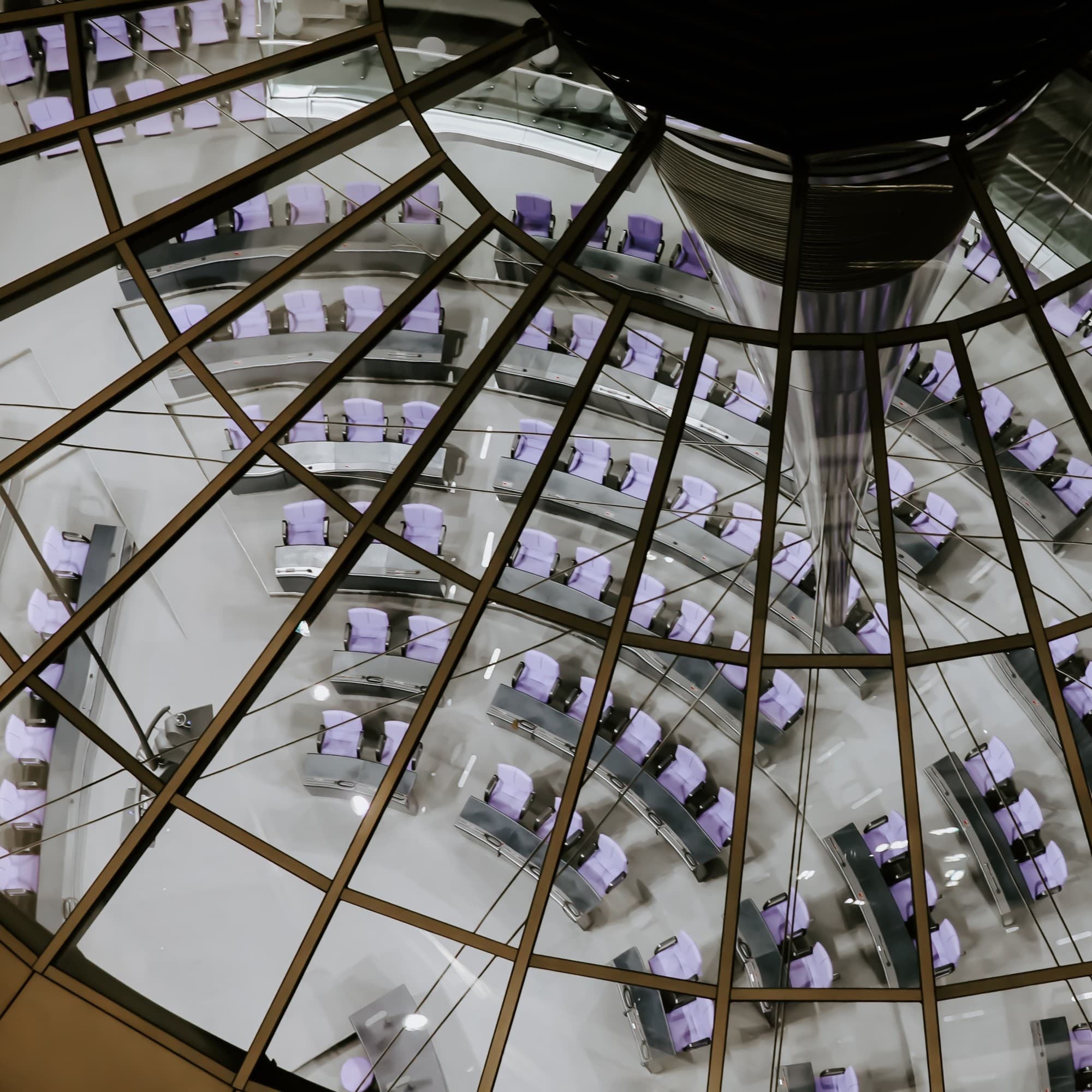
What Is Proportional Representation?
In a system of proportional representation (PR), the number of representatives in each district are elected in proportion to the number of voters who support them.
For example, if one-third of voters support a particular political party or are members of that party, then that party's candidates will win one-third of those seats. The number of seats won by each party is equal to the number of people who vote for that party.
In cases where two parties are vying for those seats, both win a percentage of that vote. Let's say 30% of people vote for Party A, while the other 70% vote for Party B. Party A would win 30% of the seats, while Party B gets 70%.
Proportional representation benefits voters in many ways. It ensures equity among voters regardless of race, ethnicity, or social status. It allows everyone to have a voice in what's happening within their government. Proportional representation benefits more than one party because it counts ballots based on percentages rather than a majority vote count.
Where Is Proportional Representation Used?
Many countries around the world use proportional representation to improve governance for the people. A few of these countries are Germany, Italy, and Israel. Each country uses proportional representation in an effort to promote voter diversity, voter equity, and fairness in elections.
The basic principle of proportional representation is that everyone is entitled to fair representation in the government. All voters are heard and represented fairly. In an electoral system, PR ensures that all parties have the chance to serve and to represent their districts. Every party has a certain level of political strength that varies directly to their percentage in a legislative body. In short, a party's percentage of members in a legislative body should match the percentage of those who voted for that party.
Germany's Bundestag
Germany's parliament, known as the Bundestag (pictured above), is an example of proportional representation in a legislature. In the Bundestag, parties work in groups and are identified as such. Germany's rule is that a party and its members must win a minimum of 5% of the vote in order to serve in the Bundestag. The maximum number of positions in Germany's Bundestag is 736, with a minimum of 598 to be filled by potential representatives. The Bundestag ensures that voters have a say in what happens in their own country. Rather than having orders from the chancellor, Bundestag representatives answer to their voters.
Bundestag Elections: The Basics
German law mandates that all voters be at least 18 years of age to vote. A new Bundestag is elected once every four years by the German people. Mixed-member proportional voting allows voters the chance to increase political representation by casting two different votes: one for a single seat, and another for a political party. In the Bundestag,this allows candidates the chance to fill at least 598 of the 736 vacancies while giving voters a chance at fair representation in the German government.
The Function of the Bundestag
The Bundestag is Germany's main federal legislative body. Bundestag members are responsible for the fiscal needs of the country and the government. They help control Germany's spending by creating a budget each year. The Bundestag is like Congress in the United States in that they keep the chancellor in check. The core difference is that the chancellor is elected by the legislative body and not the citizens.
Parlamento Italiano: The Italian Parliament
Italy's Parlamento Italiano, a part of the Italian Republic, is the current legislative body that governs the country at a federal level. This system is unusual in that it allows both houses of parliament equal power over current and new laws. Senators and deputies have equal responsibility and equal prestige, so there isn't much difference between the two. The only distinction is that a candidate must choose only one office to run for.
How Elections Work in the Italian Parliament
Elections for the Parlamento Italiano are regulated under a new electoral reform that was introduced in 2017 as a way to govern Parlamento elections and include the Chamber of Deputies and incumbent members of the Senate of the Republic of Italy. New laws regarding mixed electoral systems include proportional representation and parallel voting. Both systems are designed to fill as many vacancies as possible in both houses. The Senate has 126 candidates that are elected by a proportional method, while 74 are elected directly within their districts. Some Senate members have no term limits and are elected to serve for life.
Senators are elected using single ballot votes with their parties listed. The Chamber of Deputies uses a similar method where 253 of the seats are filled with proportional votes, while 147 are elected directly by single votes. For the Chamber, the proportional vote is estimated based on national voting averages. This is how proportional representation works for Italy's Parliament.
The Function of the Parlamento Italiano
The main function of the Parlamento Italiano is to enact laws. Members of both houses are responsible for approving or rejecting bills. When a new bill is introduced, it is submitted to one house for approval. If it passes that house, it's sent to the other house for a final vote before the bill becomes law. It's then read by the representatives in the other house, who read it and make changes as necessary. If these changes must be made, the bill is sent back to the other side of the legislature for approval. Both houses can make as many changes as needed before the bill goes to the President for final approval.
Israel's Knesset
The Knesset is Israel's federal governing body. Its name is Hebrew for "gathering" or "assembly," and this group of legislators is elected to oversee the Israeli government. The Knesset acts like a Congress in that it holds leaders in check and keeps them accountable for many things.
The Knesset has du jure parliamentary supremacy and can pass laws based on voter majority. The idea behind the Knesset is checks and balances, where it provides power to each branch of the Israeli government. For example, the Knesset grants powers to states and courts to keep members from gaining too much power.
How Israeli Knesset Elections Work
The Knesset comprises 120 seats with members who are elected by a national electorate to serve four-year terms. Seats are determined by the D'Hondt method. This method determines the number of seats won by the highest averages in proportional voting systems. Knesset elections have the lowest threshold because they use lower averages. The current average is set to 3.25%, which allows a minimum of 10 factions to be represented in the legislative body. In Israel, there is no single party who dominates the body, nor has it ever won 61% of the vote. The Knesset gives ample representation of multiple parties from multi-member districts, which is the most balanced form of PR.
The Function of the Israeli Knesset
As the executive branch of the Israeli government, the Knesset serves many functions. Its primary role is to oversee all branches of the Israeli government. The Knesset has the power to appoint a president and can select and approve all cabinet members. They form special committees which are responsible for monitoring government affairs and keeping the Knesset informed of any mistakes. They crack down on fraud, waste, and abuse within the government. Their role is to ensure fair and equal representation and to uphold the Israeli constitution.
These top three examples of countries that use proportional representation illustrate the way that PR can benefit modern political systems. Most countries worldwide use a form of this voting method as a means of giving every candidate, voter, and party fair representation in federal and state governments. Under proportional representation, successful campaigns aren't based on a winner-takes-all approach. Instead, they're about electing multiple candidates in proportion to the number of voters who support them.
Why Is Proportional Representation Important?
Some electoral systems have people voting for a single candidate to represent a certain district or region. This candidate is usually a member of one of the dominant parties in a country's political system.
The United States is a prime example of such a system. For over a century and a half, the country has mainly run its political campaigns using two dominant parties: the Republicans and the Democrats. Both parties have become increasingly divided to the point of political polarization where representatives become deadlocked on current issues. This is a common occurrence in a winner-takes-all system.
The United States’ typical electoral system works like this: voters in a district will cast their ballots in favor of a chosen candidate. If this candidate gets the most favorable ballots, they win. Everyone else loses, even the candidate who came in second. Once they win, they are expected to represent their districts as a single leader. This is true of senators, members of Congress, and the House of Representatives. All they need is to earn at least 51% of the vote.
However, not all electoral systems in the United States work the same way. Both historically and recently, many communities have taken advantage of alternative voting systems like proportional representation and ranked choice voting.
Proportional Representation in the United States: A Brief History
During the last part of the nineteenth century, more American citizens grew weary of winner-takes-all voting styles. They wanted a system that would offer better representation and greater equity. Some U.S. cities began experimenting with single transferable voting systems. Single transferable voting systems are a proportional voting style that allows voters to select the candidates they wish to vote for. Each voter only gets one vote per candidate with this method. Voters can rank their chosen contenders according to whom they like best. There is no minimum or maximum number of people allowed in the ranking system. In fact, each voter is allowed to choose as many people as they wish to rank.
In 1893, the Proportional Representation League (PRL) was founded. The group’s primary aim was to follow the old English system, and they did this by implementing a single transferable voting system. The original plan was to reform government at the federal level, but there were too many rules and regulations that hampered proportional voting because the government favored a winner-takes-all approach to elections. The League then decided to reach out to city governments to propose their ideas.
The Proportional Representation League found it easier to work at a local level, especially with cities and towns. Leaders in the organization found it easier to work with cities because of fewer regulations. For most cities all it took was a change in the city's charter to adopt a proportional style of local leadership.
Proportional representation in the United States was used briefly as an experiment in voting during the first half of the 20th century. The basic tenet was to reduce government corruption and increase voter representation on all levels. Progressive reformers and suffragists understood the value of winnings based on voter averages rather than getting the most votes. Crime and corruption in urban areas became hot topics that concerned political reformers. Other issues like child labor and women's suffrage soon took precedence, and America began to consider PR as a means of obtaining better delegation among voters and their districts.
Progressives went on a mission to clean up political fraud and eliminate power imbalances between leaders and their voters. They wanted to use proportional representation to eliminate single-party monopolies at the macro and micro levels of government. Soon, the novel idea of PR gained steam in several U.S. cities. Supporters believed it would minimize voting fraud and improve voter turnout. People would feel more motivated to vote because their voices would be heard. There would be more widespread delegation among representatives and their voters. From all appearances, proportional voting seemed the most popular choice for the people. Unfortunately, it wasn't destined to last long.
Why Didn't Proportional Representation Last in the United States?
Politicians and dominant political parties soon launched an attack against proportional representation. Many felt that they were losing steam within the new system. Political contenders and their parties saw their power and prestige dwindle as the people gained more power through voting.
Legal challenges followed, and proportional voting methods were soon thrown out. Cities across the U.S. went back to the old ways of voting by majority. The candidate with the most wins got elected for office. Some cities used referendums to repeal proportional systems and replace them with majority votes for a single candidate. By the early 1930s, the Proportional Representation League lost a fair amount of its original supporters and was forced to merge with the National Municipal League instead.
However, proportional representation is still used in certain cities in the United States. For instance, Cambridge, Massachusetts uses proportional representation to elect members of its city council and school committee.
Proportional Representation’s Advantages and Disadvantages
Advantages of Proportional Representation
Despite its relative failure in the United States, proportional voting has several perks. The main advantages of PR include:
Reduction in gerrymandering
More equitable representation in government
Greater political diversity
Less voter alienation
Other advantages of PR include multi-member districts where at least two members are elected to serve in a legislative body. Multi-party systems have greater diversity because one party isn't favored over another.
Disadvantages of Proportional Representation
Political systems aren't foolproof. The disadvantages of PR include:
Potential for extremism
Lack of voter accountability when an ousted party attempts to regain power
Potential for political and legal indecision due to weaker coalition governments
Proportional representation also creates the possibility that voters may be faced with too much information at times. This is prevalent in political systems where multiple delegates are elected by percentages. In the winner-takes-all approach, ballots are counted for a single member district in which only one person wins the election.
One prime example of failure within this system is the potential for indecision among leaders. Weak coalition governments can form when party disputes arise. These discrepancies happen when two or more parties cannot come together on a single issue. Germany's 2009 tax reform bill never got passed due to disagreements between junior and senior coalition partners.
Move Past the Status Quo
Electoral reform is a hot topic recently, and for good reason — American voters deserve fairer elections and a more representative government. If you’re passionate about reforming American elections and building a more representative democracy, join GoodParty.org’s online community of independent thinkers and changemakers across the country. Get involved today by signing up for our newsletter or joining our online community.
Photo by Claudio Schwarz on Unsplash

